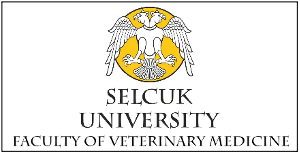| 2018, Cilt 34, Sayı 4, Sayfa(lar) 228-232 |
| [ Türkçe Özet ] [ PDF ] [ Benzer Makaleler ] |
| The effect of preliminary body weight of the Limousin cattle on the economic fattening performance |
| Mehmet Saltuk Arıkan, Emin Ertan Gökhan |
| Fırat Üniversitesi Veteriner Fakültesi Hayvan Sağlığı Ekonomisi ve İşletmeciliği Anabilim Dalı, 23119, Elazığ, Türkiye |
| Keywords: Economic analysis, cattle fattening, Limousin, profitability, fattening cost |
| Downloaded:1453 - Viewed: 3679 |
|
Aim: This research was carried out to evaluate the preliminary
body weights of the Limousin Cattles, imported from abroad,
in Turkeys conditions on the cattles fattening performance in
terms of its technical and economic aspects.
Materials and Methods: The material of the research was composed of the data belonging to the 270 days of fattening about 6-12 month-old 60 male Limousin cattle, imported from abroad. The cattle of which the initial live-weights was 260 kg or less were defined as Group I, those between 261 and 280 kg as Group II and those over 281 kg as Group III. Results: According to the results of the research, the preliminary body weight was calculated as 273,63±21,98 kg, the final body weight as 622,70±19,94 kg, the average daily body weight gain as 1,29 kg and also the feed conversion ratio as 6,45 kg. The highest profit per animal was found in the group 1, while the average live weight cost per animal was 12.27 TL/kg (3.40 US$/kg) and the live weight increase cost per animal was found to be 8.58 TL/kg (2.38 US$/kg), respectively. Conclusion: The enterprises conduct their fattening activities with different breeds of imported animals. The evaluation for the limousin cattle revealed that breeding the low weight young animals at the beginning of the fattening increases the enterprises profit per animal. On the other hand, because of the high costs of fattening material, it is noteworthy to carry out such studies in livestock animals of different breeds in terms of effective use of resources. |
| [ Türkçe Özet ] [ PDF ] [ Benzer Makaleler ] |





